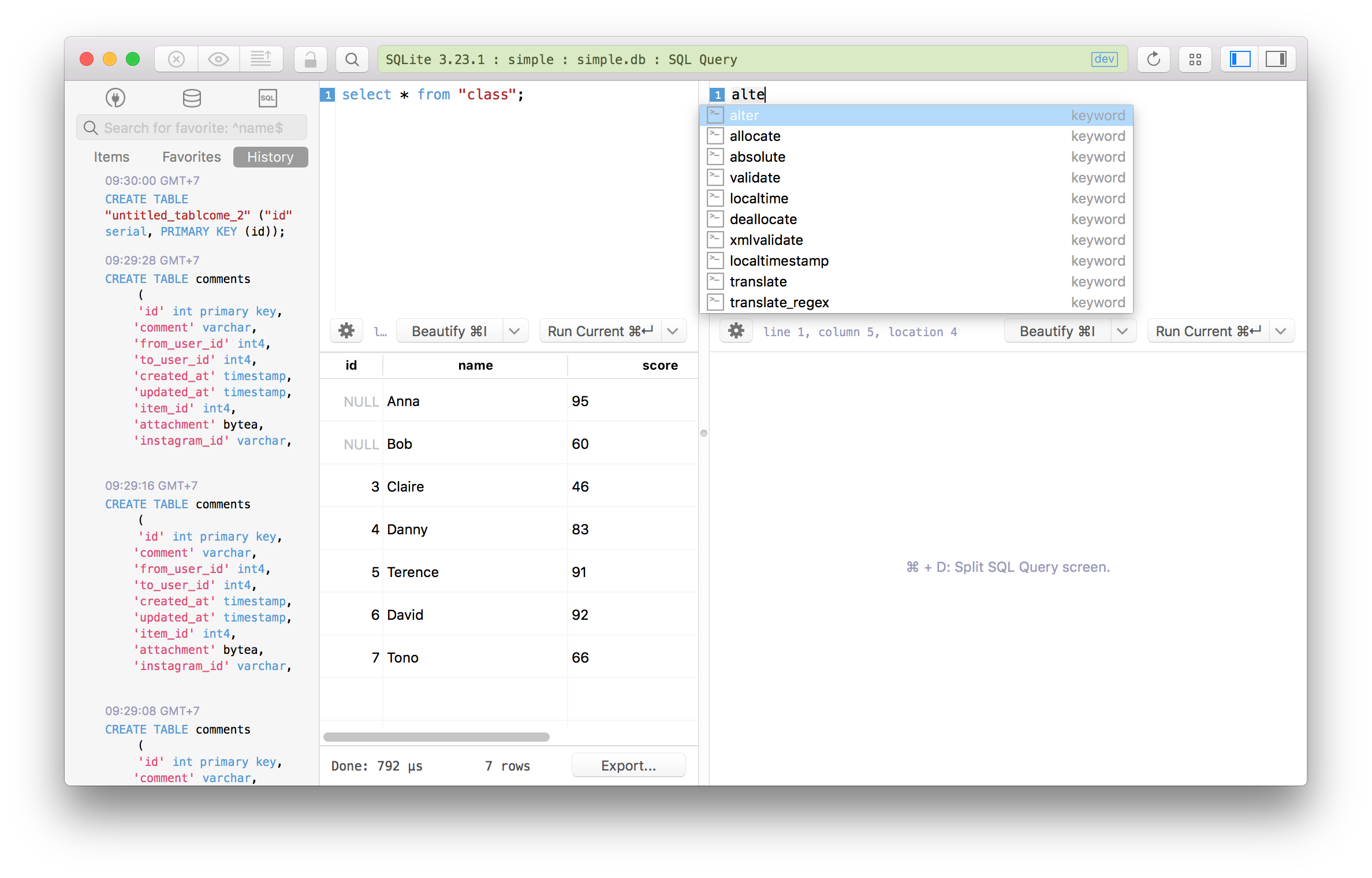

Donna doesn't have a spouse in the table, so Donna is not included in the resulting data set. In our example, we have an inner join which returns only the matched records that is, only the customers with spouses are returned. This is an inner join, but you can use any type of join: LEFT JOIN, RIGHT JOIN, CROSS JOIN, etc. We keep five columns from the customer table and append from the same table two columns that contain the name of the spouse. We need to use the table aliases for column retrieval ( cust.firstname, cust.lastname, spouse.firstname, etc.). Right before the FROM keyword, we choose columns we want to keep in the resulting table. Here, I’m using the aliases cust and spouse.

#TABLEPLUS VIEW SQL PRINT CODE#
The code does not work without them, since it would not know which copy of the table you are referring to. Table aliases are required in a self join. When we find a match, the columns firstname and lastname are added to the resulting table. For each record with a non-null value in spouse_id, we search for the value of customer_id that matches it. You can think of a self join as a join between two copies of the same table. Since spouse_id contains the customer_id of the spouse, we need to join the table with itself to get the name of the spouse. The information about the spouse, such as his or her name, is stored in the same table as a separate customer with his or her own customer_id. It is a JOIN statement in which the customer table is used twice. Here is the code from our self join example: The syntax for the self join is very similar to any other type of joins.

Now that you’ve seen an example use case for self joins, let's review its SQL syntax. When you run this code, the result is the following: customer_id To do this, we need to perform a self join, that is, join the customer table to itself: We can add the first name and the last name of the spouse to each record in the customer table. For example, Customers 1 and 2 (John and Mary) are spouses of each other, Customers 3 and 5 (Lisa and Tim) are spouses of each other, and so on. The spouse_id column stores the customer_id of the customer’s spouse. Here’s the customer table as a reminder: customer_id Doing a self join would mean, for instance, joining the customer table to itself. So, we joined two different tables to each other. In our example above, we wanted to add a column from the city table, the city name, to the customer table. Instead of joining two different tables, you join one table to itself. We will examine two such scenarios: joining a table to itself and joining tables with multiple relationships.Ī self join is a special case of the join. Generally, this involves adding one or more columns to a result set from the same table but to different records or by different columns. Sometimes you need to join the same table multiple times. Now that we have done a quick review, let's look at more complex joins.
#TABLEPLUS VIEW SQL PRINT PLUS#
The result of this join will be one table with all 6 fields from the customer table, plus an additional field from the city table: customer_id To learn more, check out our interactive course on SQL joins which you can find on. I'm not going to dive deep into the JOIN syntax here. There are several types of joins in SQL this example does an INNER JOIN. We retrieve all 6 columns from the customer table and one column, name, from the city table. In this JOIN statement, we match the records from customer and city by a key ( city_id). Now, if you want to join them together to get the customers’ respective city names, you can do so with a join like this: We have two tables: customer and city, with a common column named city_id. You have two tables, A and B, and you combine them by using a column common to both. You are probably familiar with the joins in SQL. When and why do you need to do this? How do you write it in SQL? Let’s find out. In this article, I’m going to discuss special types of joins? in which you combine the same table twice-including joining a table to itself, also known as the self join. As you may know, it is used to join and combine data from two or more tables into one common data set. JOIN is one of the most common statements in SQL.


 0 kommentar(er)
0 kommentar(er)
